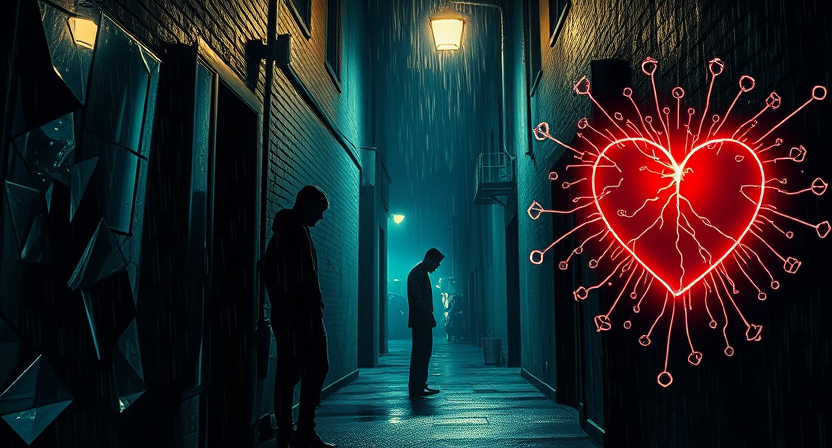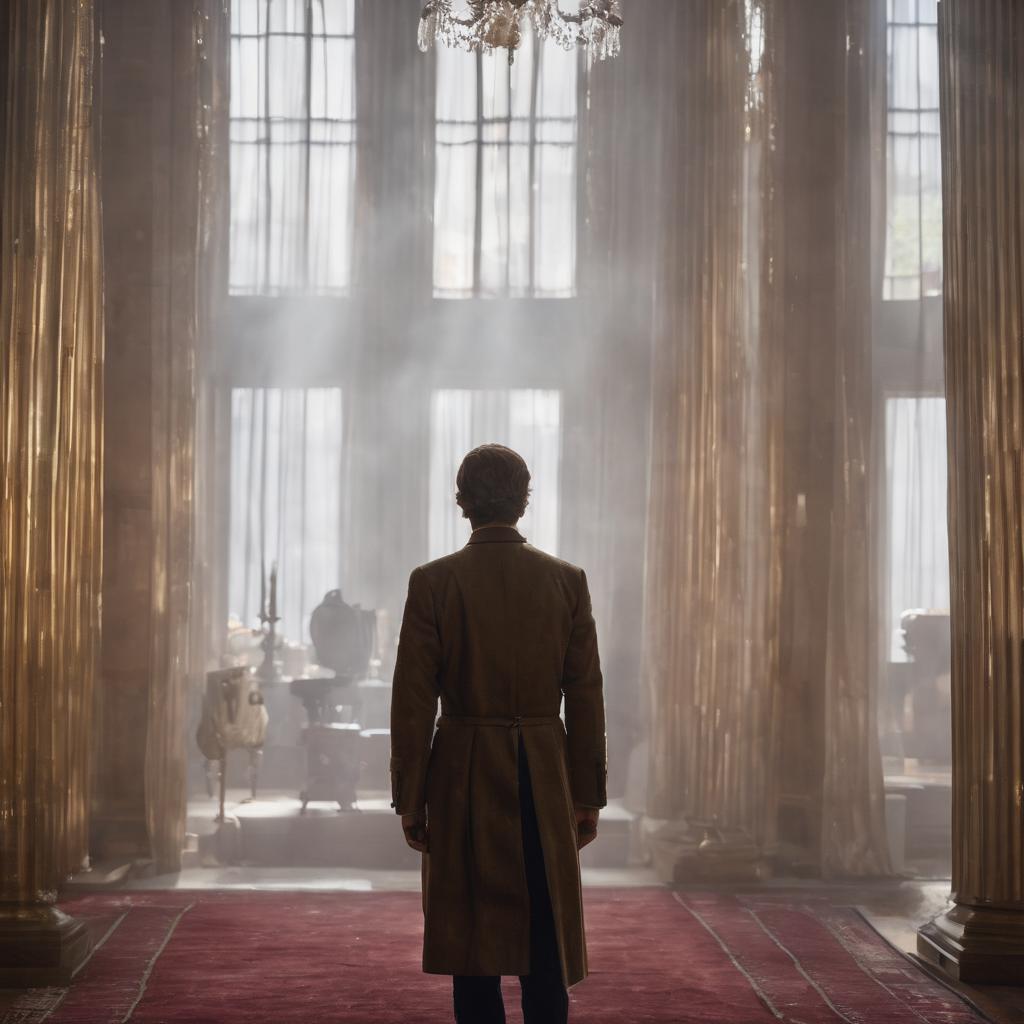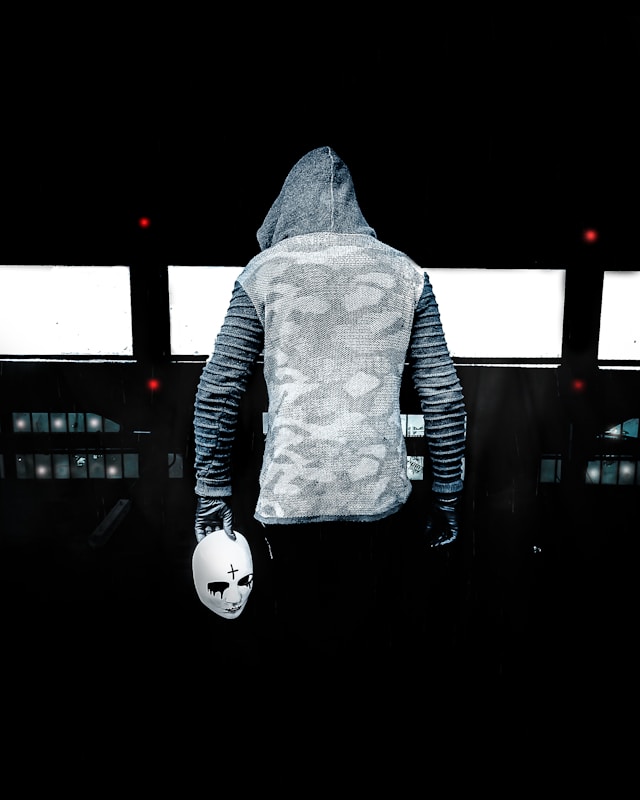Key Elements of Mystery/Thriller Shows

Mystery/thriller shows captivate audiences through a careful balance of suspense, intrigue, and well-crafted plot twists. These shows often rely on complex characters who navigate intricate storylines filled with deception, conspiracy, and psychological depth. The element of surprise plays a crucial role in keeping viewers on the edge of their seats, as unexpected revelations unfold throughout each episode, leaving audiences craving more at the end of each installment.
Moreover, the settings in mystery/thriller shows are key elements that contribute to the overall atmosphere and tone of the narrative. Whether it’s a gloomy urban landscape, a secluded small town, or a lavish mansion hiding dark secrets, the chosen backdrop sets the stage for the unfolding drama. The fusion of compelling characters, a gripping plot, and an evocative setting creates a multi-layered viewing experience that leaves a lasting impact on the audience.
• Intricate characters navigating complex storylines
• Deception, conspiracy, and psychological depth
• Element of surprise keeping viewers engaged
• Unexpected revelations unfolding throughout episodes
Furthermore, the pacing and tension in mystery/thriller shows are carefully crafted to build suspense and maintain audience interest. The gradual unraveling of clues and the escalation of stakes create a sense of urgency that propels the narrative forward. Each twist and turn in the plot adds another layer of intrigue, keeping viewers guessing until the final reveal.
• Pacing designed to build suspense
• Escalation of stakes creating urgency
• Unraveling clues leading to final reveal
• Twists and turns adding layers of intrigue
Additionally, strong visual elements such as cinematography, lighting, and sound design play a crucial role in enhancing the atmosphere of mystery/thriller shows. Dark shadows, eerie music cues, and tense camera angles all contribute to creating a sense of unease and foreboding. These visual techniques work hand in hand with the storytelling to immerse viewers in a world where danger lurks around every corner.
• Cinematography setting tone for atmosphere
• Lighting enhancing mood
• Sound design creating tension
• Visual techniques immersing viewers into world
The Suspense Factor in Modern Storytelling

Suspense is a powerful storytelling tool that keeps audiences on the edge of their seats, eagerly anticipating what will happen next. In modern storytelling, creators have mastered the art of building tension through intricate plot twists, unexpected reveals, and heart-pounding moments that leave viewers craving more. By strategically crafting suspenseful scenes and sustaining an air of uncertainty, writers hook viewers from the first episode and keep them invested in the story’s unfolding mysteries. The gradual unraveling of the narrative, coupled with the gradual reveal of clues and motives, contributes to the immersive experience of suspense-driven storytelling.
• Suspense is a powerful storytelling tool that keeps audiences on the edge of their seats
• Creators have mastered building tension through intricate plot twists and unexpected reveals
• Heart-pounding moments leave viewers craving more
• Strategic crafting of suspenseful scenes hooks viewers from the first episode
• Sustaining an air of uncertainty keeps them invested in unfolding mysteries.
• The gradual unraveling of the narrative, coupled with reveal of clues and motives, contributes to immersive experience
How Characters Drive the Plot in Thriller Shows

Character-driven storytelling is a fundamental aspect of thriller shows. The decisions, motivations, and actions of the characters propel the plot forward, creating suspense and intrigue for the audience. Complex and multi-dimensional characters add layers to the narrative, making the viewers emotionally invested in the outcomes of their choices.
Characters in thriller shows often have hidden agendas, conflicting loyalties, and shady pasts that keep the audience guessing about their true intentions. Whether it’s a morally ambiguous protagonist or a cunning antagonist, the dynamics between characters drive the twists and turns of the storyline, leading to unexpected plot developments and thrilling revelations. Viewers are drawn into the intricate web of relationships and personalities, eagerly anticipating how each character’s arc will unfold in the high-stakes world of mystery and suspense.
• Characters in thriller shows have hidden agendas, conflicting loyalties, and shady pasts
• The dynamics between characters drive the twists and turns of the storyline
• Viewers are drawn into the intricate web of relationships and personalities
• Complex and multi-dimensional characters add layers to the narrative
Exploring the Dark Side of Human Nature in Mysteries

The fascination with mysteries lies in the exploration of the dark side of human nature. These stories delve into the shadows of the human psyche, where secrets, desires, and fears lurk. Characters in mystery shows are often complex and morally ambiguous, reflecting the intricate web of motivations that drive their actions. The allure of uncovering these hidden aspects of human behavior adds depth and intrigue to the storytelling, inviting viewers to confront the darker aspects of their own nature.
By shining a light on the complexities of human behavior, mystery shows create a sense of unease and suspense that keeps audiences on the edge of their seats. The mix of deception, betrayal, and manipulation in these narratives exposes the vulnerabilities and flaws that exist within us all. As viewers are drawn into the mysteries unfolding on screen, they are forced to reckon with the darker impulses that lie dormant within themselves, blurring the lines between the hero and the villain. Through this exploration of the darker side of human nature, mystery shows offer a thrilling and thought-provoking journey into the depths of the human soul.
• Mystery stories delve into the shadows of the human psyche
• Characters are complex and morally ambiguous
• Uncovering hidden aspects of human behavior adds depth to storytelling
• Sense of unease and suspense keeps audiences engaged
• Mix of deception, betrayal, and manipulation exposes vulnerabilities within us all
The Art of Building Tension in TV Thrillers

Creating tension in TV thrillers is a delicate art that requires a careful balance of pacing, storytelling, and character development. One of the key techniques utilized by writers and directors is the strategic use of suspenseful moments, where viewers are left on the edge of their seats, eagerly anticipating what will happen next. By gradually building up tension through a series of escalating events, these shows are able to keep audiences engaged and invested in the unraveling mystery.
Moreover, the skillful manipulation of visual and auditory cues plays a crucial role in intensifying the suspense in TV thrillers. The use of dim lighting, eerie sound effects, and tight camera angles all work in harmony to create a palpable sense of unease and foreboding. This heightened atmosphere not only serves to immerse viewers in the world of the show but also heightens their emotional response, making the payoffs even more satisfying and impactful.
• The strategic use of suspenseful moments keeps viewers engaged
• Gradually building up tension through escalating events is key
• Visual and auditory cues intensify the suspense in TV thrillers
• Dim lighting, eerie sound effects, and tight camera angles create unease and foreboding
The Role of Sound Design in Creating Suspense

Sound design plays a crucial role in creating suspense in mystery and thriller shows. The use of eerie music, sudden loud noises, and unsettling sounds can effectively build tension and keep viewers on the edge of their seats. By manipulating sound elements, such as silence or crescendos, creators can enhance the atmosphere of suspense and intensify the overall viewing experience.
Incorporating sound effects, such as footsteps approaching, doors creaking, or whispers in the dark, can heighten the sense of fear and paranoia in thriller shows. These subtle audio cues can evoke a sense of unease and anticipation, making the audience more immersed in the unfolding mystery. Sound design not only enhances the visual storytelling but also plays a significant role in engaging the audience and eliciting emotional responses that contribute to the overall suspense of the narrative.
• The use of eerie music, sudden loud noises, and unsettling sounds can effectively build tension
• Manipulating sound elements like silence or crescendos enhances the atmosphere of suspense
• Incorporating sound effects such as footsteps approaching, doors creaking, or whispers in the dark heightens fear and paranoia in thriller shows
• Subtle audio cues evoke a sense of unease and anticipation for the audience
Unraveling Complex Narratives in Mystery Series

One defining feature of mystery series is their ability to entangle complex narratives that keep viewers on the edge of their seats. These shows are known for their intricate plotlines that slowly reveal clues and connections, challenging audiences to piece together the puzzle as the story unfolds. By weaving together multiple story arcs, characters, and subplots, mystery series create a web of intrigue that captivates viewers and keeps them guessing until the very end.
The art of unraveling complex narratives lies in the careful balance of revealing just enough information to maintain suspense while withholding key details to keep viewers intrigued. Through the use of foreshadowing, red herrings, and plot twists, mystery series engage viewers in a constant game of deduction, inviting them to immerse themselves in the intricate world of the story. As each layer of the narrative is peeled back, new questions arise, drawing audiences deeper into the labyrinth of secrets and surprises that define the mystery genre.
• Mystery series are known for their ability to entangle complex narratives that challenge viewers.
• These shows slowly reveal clues and connections, keeping audiences engaged in piecing together the puzzle.
• By weaving together multiple story arcs, characters, and subplots, mystery series create a web of intrigue.
• The art of unraveling complex narratives involves revealing just enough information to maintain suspense while withholding key details.
• Foreshadowing, red herrings, and plot twists engage viewers in a constant game of deduction.
• Each layer of the narrative peeled back leads to new questions and draws audiences deeper into the secrets and surprises of the genre.
The Appeal of Whodunit Mysteries in Popular Culture

Whodunit mysteries have long captured the imaginations of audiences worldwide with their intriguing puzzles and suspenseful narratives. The appeal of these types of mysteries lies in the thrill of trying to solve the case alongside the detective, uncovering clues, and piecing together the intricate details of the crime. Viewers are drawn to the challenge of deciphering the truth from a web of lies, making them active participants in the unraveling of the mystery.
In popular culture, the allure of whodunit mysteries can be seen in the widespread popularity of TV shows, movies, and books that center around the genre. From iconic characters like Sherlock Holmes to modern adaptations like Agatha Christie’s Poirot, audiences have always been fascinated by the clever detectives and enigmatic criminals that populate these stories. The timeless appeal of whodunits lies in their ability to keep viewers on the edge of their seats, engaged in the thrill of the chase and the satisfaction of a well-executed reveal.
• Whodunit mysteries engage audiences by allowing them to be active participants in solving the crime
• Viewers are drawn to deciphering clues and piecing together details alongside the detective
• Popular culture is filled with TV shows, movies, and books that center around whodunit mysteries
• Iconic characters like Sherlock Holmes and modern adaptations like Agatha Christie’s Poirot continue to captivate audiences
• The timeless appeal of whodunits lies in keeping viewers engaged in the thrill of the chase and a satisfying reveal
Analyzing the Psychology of Fear in Thriller Shows

Fear is a fundamental emotion that plays a crucial role in thriller shows, captivating audiences by tapping into their primal instincts. The psychology of fear explored in these shows delves into the intricacies of human psyche, uncovering the deep-rooted fears that resonate with viewers on a subconscious level. By depicting terrifying scenarios and suspenseful situations, thriller shows evoke a range of emotions, from anxiety to anticipation, leading to an immersive viewing experience that keeps audiences on the edge of their seats.
Through the depiction of fear-inducing elements such as unknown threats, suspenseful build-ups, and psychological mind games, thriller shows masterfully manipulate audience’s emotions. The exploration of fear in these shows is not merely for shock value, but rather serves as a tool to delve into the darker aspects of human nature and the complexities of the human mind. By dissecting the psychology of fear in thriller shows, viewers are given a glimpse into the depths of their own fears and anxieties, creating a sense of unease that lingers long after the credits roll.
• The depiction of terrifying scenarios in thriller shows taps into viewers’ primal instincts
• Suspenseful build-ups keep audiences on the edge of their seats
• Psychological mind games manipulate audience’s emotions effectively
• Fear exploration in these shows delves into the darker aspects of human nature and complexities of the human mind
The Evolution of Mystery/Thriller Genre in Television

From the early days of television, mystery and thriller shows have captivated audiences with their suspenseful storytelling and intriguing plots. Shows like “Alfred Hitchcock Presents” and “The Twilight Zone” set the foundation for the genre, blending elements of mystery, suspense, and psychological thrills to keep viewers on the edge of their seats. As television technology advanced, so did the complexity and depth of mystery/thriller shows, with series like “Twin Peaks” and “The X-Files” pushing the boundaries of what could be achieved on the small screen.
As viewers’ tastes evolved, so did the storytelling techniques employed in mystery/thriller shows. The rise of anthology series like “Black Mirror” and “American Horror Story” showcased a shift towards more episodic storytelling, allowing for a wider range of themes and styles to be explored within the genre. Additionally, the increased use of online streaming platforms has provided creators with greater creative freedom, leading to an influx of original and innovative mystery/thriller series that challenge traditional narrative structures and engage audiences in new and exciting ways.
• The early days of television featured shows like “Alfred Hitchcock Presents” and “The Twilight Zone”
• These shows set the foundation for the mystery/thriller genre with suspenseful storytelling
• As television technology advanced, so did the complexity of mystery/thriller shows
• Series like “Twin Peaks” and “The X-Files” pushed the boundaries of storytelling on TV
• Anthology series like “Black Mirror” and “American Horror Story” have showcased more episodic storytelling in the genre
• Online streaming platforms have provided creators with greater creative freedom in developing mystery/thriller series
The Influence of Classic Literature on Modern Mysteries

Classic literature has had a profound impact on the development of modern mystery storytelling. Authors such as Sir Arthur Conan Doyle, Agatha Christie, and Edgar Allan Poe laid the groundwork for the intricate plots, memorable characters, and clever twists that are now synonymous with the genre. Their timeless works have inspired countless contemporary mystery writers to craft innovative narratives that continue to captivate audiences around the world.
By drawing on the themes and techniques of classic literature, modern mystery writers are able to infuse their stories with depth, complexity, and a sense of nostalgia. Whether it’s exploring the psychology of a detective, delving into the dark motives of a villain, or unraveling a web of deceit and intrigue, these writers pay homage to the masters of the past while putting their own unique spin on the genre. The influence of classic literature can be seen not only in the structure and style of modern mysteries but also in the enduring appeal of timeless themes such as justice, betrayal, and the quest for truth.
• Classic literature has laid the groundwork for modern mystery storytelling
• Authors like Sir Arthur Conan Doyle, Agatha Christie, and Edgar Allan Poe have inspired contemporary writers
• Modern mystery writers draw on themes and techniques of classic literature to add depth and complexity to their stories
• The influence of classic literature can be seen in the structure, style, and timeless themes of modern mysteries
The Importance of Setting in Creating a Thrilling Atmosphere

The setting plays a crucial role in setting the tone and atmosphere of a mystery or thriller show. Whether it’s a creepy old mansion, a bustling city at night, or a remote wilderness, the location where the story takes place can evoke a sense of unease and suspense in the audience. The choice of setting not only provides a backdrop for the plot but also becomes a character in itself, influencing the actions and decisions of the characters within the story.
Additionally, an intriguing setting can add depth and layers to the narrative, immersing viewers in the world of the show and heightening the overall sense of mystery and tension. By carefully crafting the details of the setting, such as dim lighting, ominous shadows, or eerie sounds, creators can effectively build a sense of foreboding that keeps viewers on the edge of their seats. Ultimately, the setting acts as a crucial element in creating a thrilling atmosphere that captivates audiences and draws them deeper into the story.
• The setting can help establish the time period and cultural context of the story
• Different settings can evoke different emotions in viewers, such as fear, suspense, or excitement
• A well-developed setting can enhance character development by influencing their behavior and decisions
• The setting can also serve as a metaphor for the themes and conflicts present in the story
The Use of Red Herrings in Mystery Series

Red herrings are a common tool used by writers in mystery series to mislead the audience and divert attention away from the true culprit. These false clues are strategically placed throughout the storyline to create confusion and add complexity to the narrative. By introducing red herrings, writers can keep viewers guessing and enhance the element of surprise in the resolution of the mystery. This technique is effective in increasing suspense and making the journey towards discovering the truth more engaging for the audience.
Incorporating red herrings in mystery series requires careful planning and execution to ensure they are seamlessly integrated into the plot. Writers must strike a balance between providing enough hints to keep viewers intrigued and not revealing the true direction of the story too soon. When utilized effectively, red herrings can heighten the sense of mystery and challenge the audience’s deductive skills, leading to a more satisfying payoff when the real culprit is finally unveiled. By incorporating these deceptive elements, mystery series can maintain a sense of intrigue and keep viewers eagerly anticipating each new development in the investigation.
• Red herrings are strategically placed false clues in mystery series
• They mislead the audience and divert attention away from the true culprit
• Introducing red herrings enhances suspense and adds complexity to the narrative
• Careful planning is required to seamlessly integrate red herrings into the plot
• Balancing hints and not revealing the true direction too soon is crucial
• Effective use of red herrings challenges audience’s deductive skills
• The payoff of unveiling the real culprit is more satisfying with red herrings in place.
The Impact of Technology on Mystery Storytelling

The advancement of technology has significantly transformed the landscape of mystery storytelling in television. With the rise of sophisticated surveillance systems, forensic techniques, and digital footprints, writers now have a plethora of resources to weave intricate plots and create captivating narratives. This integration of technology has not only added layers of complexity to mysteries but has also enabled the portrayal of crimes in a more realistic and immersive manner.
The use of cutting-edge technology in mystery shows has allowed for a deeper exploration of cybercrimes, hacking, and digital vulnerabilities. By incorporating smartphones, social media, and artificial intelligence into the storyline, writers can tap into the fears and uncertainties of modern society. This seamless integration of technology in mystery storytelling has not only made the narratives more relatable to the audience but has also opened up endless possibilities for creative storytelling in this genre.
• The integration of technology has allowed for intricate plots and captivating narratives in mystery storytelling.
• Sophisticated surveillance systems, forensic techniques, and digital footprints have transformed the landscape of mystery shows.
• Technology enables the portrayal of crimes in a more realistic and immersive manner.
• Cutting-edge technology allows for deeper exploration of cybercrimes, hacking, and digital vulnerabilities in mystery shows.
• Incorporating smartphones, social media, and artificial intelligence taps into modern society’s fears and uncertainties.
• Technology has made mystery narratives more relatable to the audience.
• Endless possibilities for creative storytelling have opened up with the seamless integration of technology in this genre.
The Rise of Antiheroes in Thriller Shows

Antiheroes have carved a prominent place in the realm of thriller shows, captivating audiences with their morally ambiguous nature. These complex characters typically possess traits that deviate from the conventional hero archetype, often exhibiting a willingness to bend the rules or resort to ethically questionable methods in pursuit of their goals. Viewers are drawn to antiheroes due to their unpredictability, inner turmoil, and the blurred line between right and wrong that they embody.
In contrast to traditional protagonists who adhere to a strict moral code, antiheroes challenge societal norms and confront audiences with their flawed personas. Their multidimensional portrayal resonates with viewers on a deeper level, offering a glimpse into the darker aspects of human nature. The rise of antiheroes in thriller shows reflects a shift towards more realistic and morally ambiguous storytelling, where characters are not bound by typical hero tropes but rather navigate the murky waters of right and wrong in a compelling manner.
• Antiheroes in thriller shows captivate audiences with their morally ambiguous nature
• These characters often bend the rules and use ethically questionable methods to achieve their goals
• Viewers are drawn to antiheroes due to their unpredictability, inner turmoil, and blurred line between right and wrong
In contrast to traditional protagonists, antiheroes challenge societal norms and present flawed personas that resonate with viewers on a deeper level. Their multidimensional portrayal offers a glimpse into the darker aspects of human nature, reflecting a shift towards more realistic and morally ambiguous storytelling in the realm of thrillers. As audiences crave complex characters who navigate the murky waters of morality in compelling ways, the rise of antiheroes in thriller shows continues to shape the landscape of television entertainment.
The Connection Between Mystery/Thriller Shows and Real-Life Crime

Mystery/thriller shows have long been intertwined with real-life crime, drawing inspiration from actual criminal cases to create gripping narratives for viewers. The fascination with the darker aspects of human behavior portrayed in these shows often mirrors the intrigue and horror found in true crime stories. From unsolved murders to high-profile court cases, the parallels between fiction and reality in the realm of mystery and thrillers continue to captivate audiences worldwide.
One of the key aspects that link mystery/thriller shows to real-life crime is the exploration of motives behind criminal acts. These shows delve deep into the psychology of perpetrators and victims, shedding light on the complexities of human nature and the factors that drive individuals to commit heinous crimes. By examining these intricate relationships and motives, viewers are not only entertained but also provided with a thought-provoking look into the harsh realities of crime and its impact on society.
• Mystery/thriller shows often draw inspiration from actual criminal cases
• The fascination with the darker aspects of human behavior is mirrored in true crime stories
• Parallels between fiction and reality continue to captivate audiences worldwide
• Exploration of motives behind criminal acts is a key aspect linking mystery/thriller shows to real-life crime
• These shows delve deep into the psychology of perpetrators and victims, shedding light on human nature
The Power of Cliffhangers in Keeping Audiences Engaged

Cliffhangers have a remarkable ability to captivate audiences and keep them on the edge of their seats. These suspenseful endings leave viewers eagerly anticipating what will happen next, driving them to tune in to the next episode. By leaving key plot points unresolved or introducing unexpected twists, cliffhangers create a sense of intrigue and urgency that compels viewers to stay engaged with the story.
The strategic placement of cliffhangers at the end of episodes serves as a powerful storytelling tool to maintain viewers’ interest and build suspense. Whether it’s a shocking revelation, a character in jeopardy, or a major unresolved conflict, cliffhangers leave audiences craving resolution and closure. This narrative technique not only keeps viewers emotionally invested in the story but also fosters a sense of anticipation and excitement that encourages them to continue watching to discover the resolution.
• Cliffhangers create a sense of intrigue and urgency
• Viewers eagerly anticipate what will happen next
• Strategic placement at the end of episodes maintains interest and builds suspense
• Shocking revelations, characters in jeopardy, unresolved conflicts keep audiences craving resolution
• Emotional investment in the story is maintained
• Encourages viewers to continue watching to discover the resolution
The Role of Social Commentary in Contemporary Thriller Series

Social commentary has become an integral part of contemporary thriller series, serving as a powerful tool to explore societal issues and provoke thought among viewers. By incorporating themes such as corruption, inequality, and justice into their narratives, these shows not only entertain but also offer a reflection of the world we live in. Through complex characters and intricate plots, writers and creators navigate the delicate balance between entertainment and social critique, sparking important conversations about the state of our society.
Many modern thriller series use their platform to shed light on topics such as politics, technology, and human rights, providing a lens through which viewers can examine the complexities of the world around them. Through compelling storylines and compelling character arcs, these shows bring attention to pressing issues and challenge audiences to confront uncomfortable truths. By weaving social commentary into their narratives, contemporary thriller series not only entertain but also educate and inspire viewers to think critically about the world they inhabit.
• Social commentary in contemporary thriller series explores societal issues and provokes thought among viewers
• Themes such as corruption, inequality, and justice are incorporated into narratives
• Shows offer a reflection of the world we live in through complex characters and intricate plots
• Writers navigate the balance between entertainment and social critique to spark important conversations
Many modern thriller series serve as a platform to shed light on topics like politics, technology, and human rights. They provide viewers with a lens through which they can examine the complexities of the world around them. Through compelling storylines and character arcs, these shows bring attention to pressing issues and challenge audiences to confront uncomfortable truths. By integrating social commentary into their narratives, contemporary thriller series not only entertain but also educate and inspire viewers to think critically about their surroundings.
The Psychological Effects of Watching Suspenseful TV Shows

Viewing suspenseful TV shows can have a profound impact on our mental and emotional well-being. The heightened tension and anticipation created by these shows can trigger a range of psychological responses in viewers. As we become engrossed in the twists and turns of the plot, our heart rate may increase, adrenaline levels rise, and our senses become heightened, creating a sense of unease and excitement all at once.
Furthermore, the suspenseful nature of these shows can lead to increased levels of stress and anxiety in some individuals. The constant state of uncertainty and unpredictability can keep viewers on the edge of their seats, causing feelings of uneasiness and suspense to linger long after the show has ended. This prolonged exposure to suspense and tension may impact our sleep patterns, mood, and overall mental health.
• The suspenseful TV shows can trigger a range of psychological responses in viewers
• Heart rate may increase, adrenaline levels rise, and senses become heightened
• Creates a sense of unease and excitement simultaneously
• Increased levels of stress and anxiety can be experienced by some individuals
• Constant state of uncertainty and unpredictability can keep viewers on edge
• Feelings of uneasiness and suspense may linger long after the show has ended
• Prolonged exposure to suspense and tension may impact sleep patterns, mood, and overall mental health
The Future of Mystery/Thriller Genre on Streaming Platforms
As streaming platforms continue to dominate the entertainment industry, the future of the mystery/thriller genre looks promising. With the ability to binge-watch entire seasons at once, viewers are craving more complex and engaging narratives that keep them hooked from episode to episode. The convenience of streaming platforms allows for innovative storytelling techniques and boundary-pushing content that may not have been feasible on traditional television.
Moreover, the global reach of streaming services opens up opportunities for diverse perspectives and storytelling styles within the mystery/thriller genre. This means that viewers can expect a more inclusive portrayal of characters and cultures, offering a fresh take on traditional tropes and plotlines. The evolution of technology and data analytics also enables streaming platforms to tailor recommendations to individual viewer preferences, ensuring that mystery/thriller shows continue to captivate audiences in the years to come.
• As streaming platforms continue to dominate the entertainment industry, the future of the mystery/thriller genre looks promising.
• Viewers are craving more complex and engaging narratives that keep them hooked from episode to episode.
• The convenience of streaming platforms allows for innovative storytelling techniques and boundary-pushing content.
• The global reach of streaming services opens up opportunities for diverse perspectives and storytelling styles within the mystery/thriller genre.
• Viewers can expect a more inclusive portrayal of characters and cultures, offering a fresh take on traditional tropes and plotlines.
• Technology and data analytics enable streaming platforms to tailor recommendations to individual viewer preferences.




